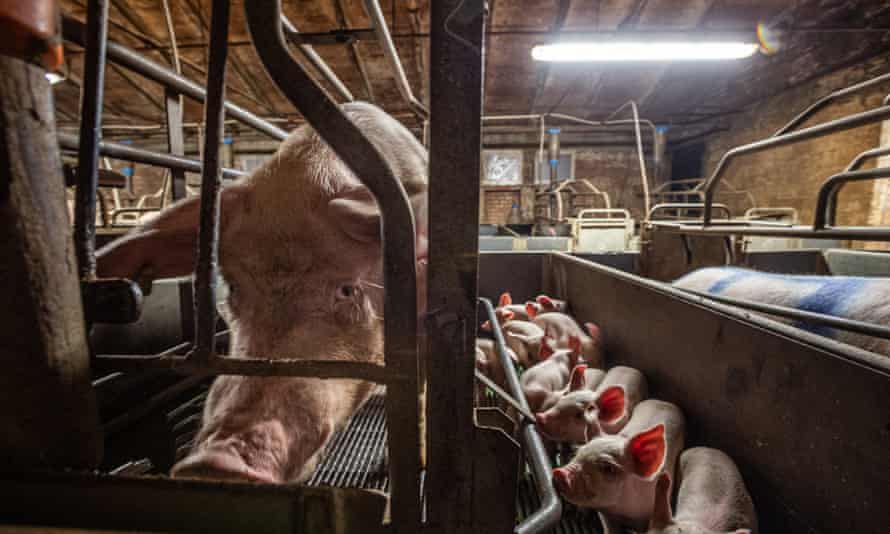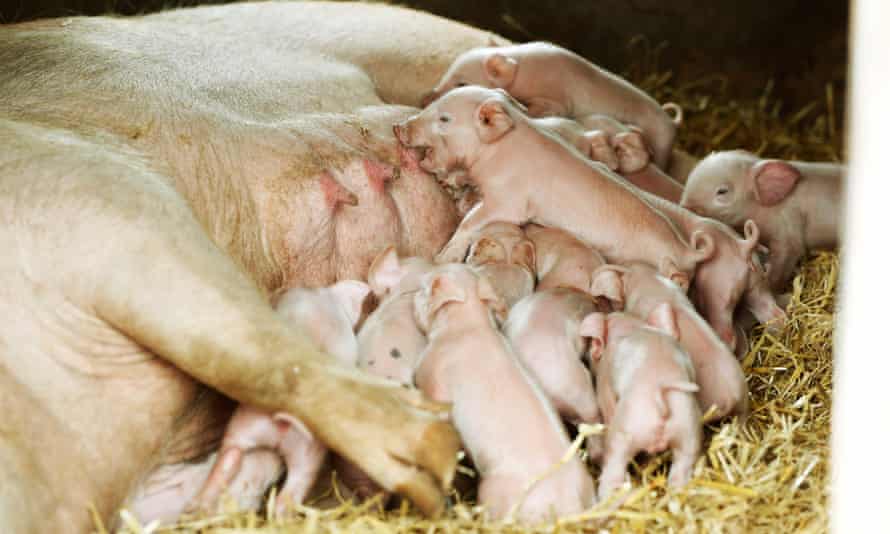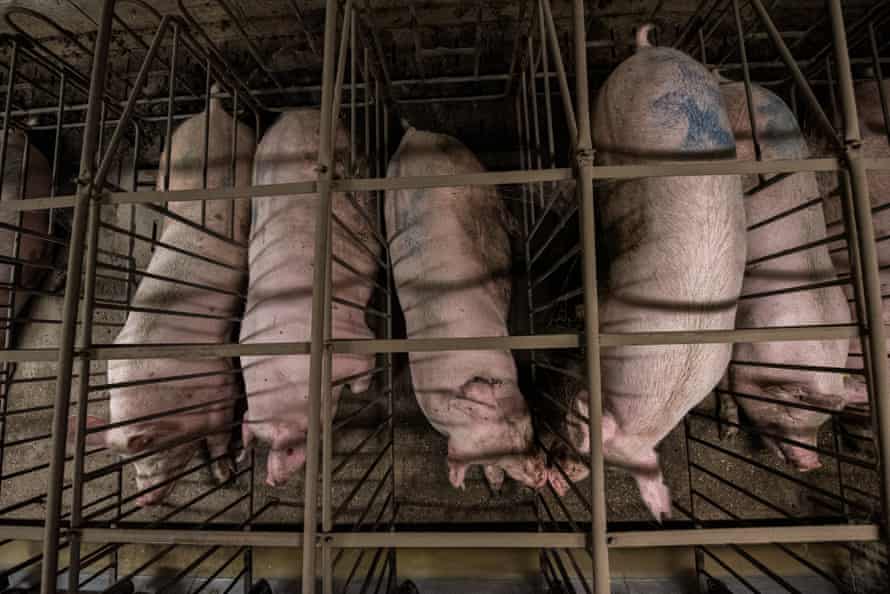Saving the bacon: will British pig farmers survive a ban on cages?
An end to UK pig confinement is in sight, but producers fear they will be left carrying the cost of high-welfare options in the face of cheap imports

After more than a decade trialling the removal of pig cages on her Yorkshire farm, Vicky Scott has lost confidence in being able to make it permanent.
Doing so would require building a new shed to create enough space to freely house all her pigs, she says. “No one will pay for this. They [the retailers] want products as cheap as chips and consumers want cheap meat.”
Yet, the UK and EU are expected to ban all forms of confinement in pig rearing.
In June, the European Commission confirmed it would table a proposal to phase out the use of farrowing crates, which are used to confine sows before and after birth, by the end of 2023. The UK – and Boris Johnson himself – have made clear that the long-term aim is to do the same.
Crates are used to confine expectant sows until their piglets are weaned after four weeks. They restrict the sows’ movement, reducing the risk of crushing the piglets.
However, as well as restricting sows’ natural behaviour and movement, including nest-building and interacting with her piglets, there is also evidence the crates increase the risk of stillbirth.
Piglets are vulnerable to being crushed by sows if they are not in a crate, but the overall mortality rates can be managed, says pig specialist Emma Baxter, from Scotland’s Rural College. Outdoor pig systems, where pigs are not confined, consistently return average piglet mortality rates similar to indoor ones where the pigs are confined, she says.

Given the majority of pigs in the UK are reared indoors because outdoor rearing is limited by soil type, producers will need to be able to adopt high-welfare indoor alternatives to farrowing crates, says Baxter.
“Indoor farrowing without crates is workable, but usually requires more space per sow place, so that has cost implications. It also needs better husbandry skills, and ideally the right type of sow – ie good maternal traits and sensible litter size,” says Jeremy Marchant-Forde, a research animal scientist with the US Department of Agriculture.
But the industry trend towards bigger litters could make it harder to shift away from confinement.
“There remains a push [from the pig industry] for larger and larger litters, and even though this means more piglet losses, birth to weaning, the end result is a steadily increasing number weaned each litter,” says Marchant-Forde. “However, what the impact of crate-free farrowing on piglet mortality in large litters might be, is a bit of an unknown.”
For Scott, the only viable option to phase out the use of crates is a costly upgrade to her indoor system. Moving outdoors is not feasible, given the wet climate and unsuitable soils for keeping pigs in Yorkshire.
“I wouldn’t want to give birth knee-deep in mud. There is no way my [piglet] mortality is better outdoors. The higher-welfare system for me is indoors,” she says.
A more workable solution, Scott says, is a system of temporary farrowing crates where the sow is only confined for a day before giving birth and three or four days afterwards. “I think it’s the right way to go. The [mother] pigs are happier and the piglets are safer.”
Baxter believes confinement before the birth is stressful for the sow because of the impact on instinctive nest-building behaviour.
“If you are going to confine her at all to protect the piglets then you do it in the first few days after birth when the piglets are most vulnerable,” Baxter says. “But it needs careful management to reduce disturbance and disruption of important early suckling behaviour.”
Making any change for her 1,700 herd would be a hugely expensive endeavour for Scott. And one that retailers, she says, are refusing to support producers to do. They say consumers won’t pay more for pig meat from indoor systems.
Unsurprisingly, that makes producers like Scott wary of change, especially given fears of a flood of cheaper US pork produced to lower standards in the event of a free trade deal between Britain and the US.
Many pig producers remember the UK government introducing a ban on the use of gestation crates in 1999. Bringing in the new rules while allowing imports of cheaper pig meat from the Netherlands, Denmark and Germany, where no ban was in place, contributed to a halving in the number of UK pig producers. The UK now imports about 50% of its pig meat.

Farming groups say the support of the government and retailers is vital to the transition away from crates and confinement, to protect against sub-standard imports and a collapse in domestic pig production.
“A lot will depend on the timeline to transition. We don’t want an exodus. We just want a managed transition so the industry isn’t just exported overseas,” says Zoe Davies, chief executive of the National Pig Association.
“It’s better welfare for the sow to get up and wander around and interact with her piglets. If the supply chain supports the transition then it will be viable and we’ll attract new people to the industry and keep improving.”
Sign up for the Animals farmed monthly update to get a roundup of the best farming and food stories across the world and keep up with our investigations. You can send us your stories and thoughts at animalsfarmed@theguardian.com
